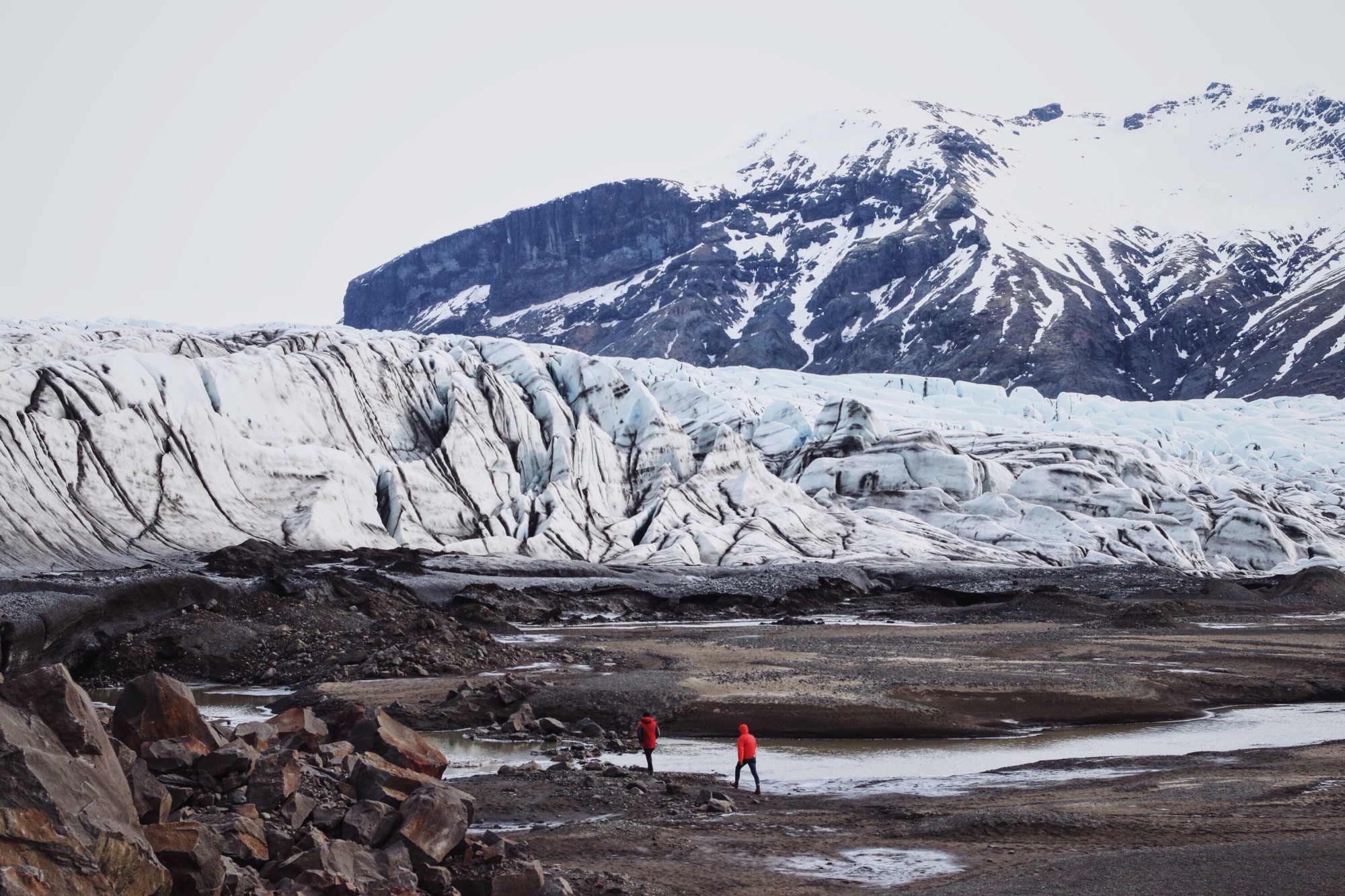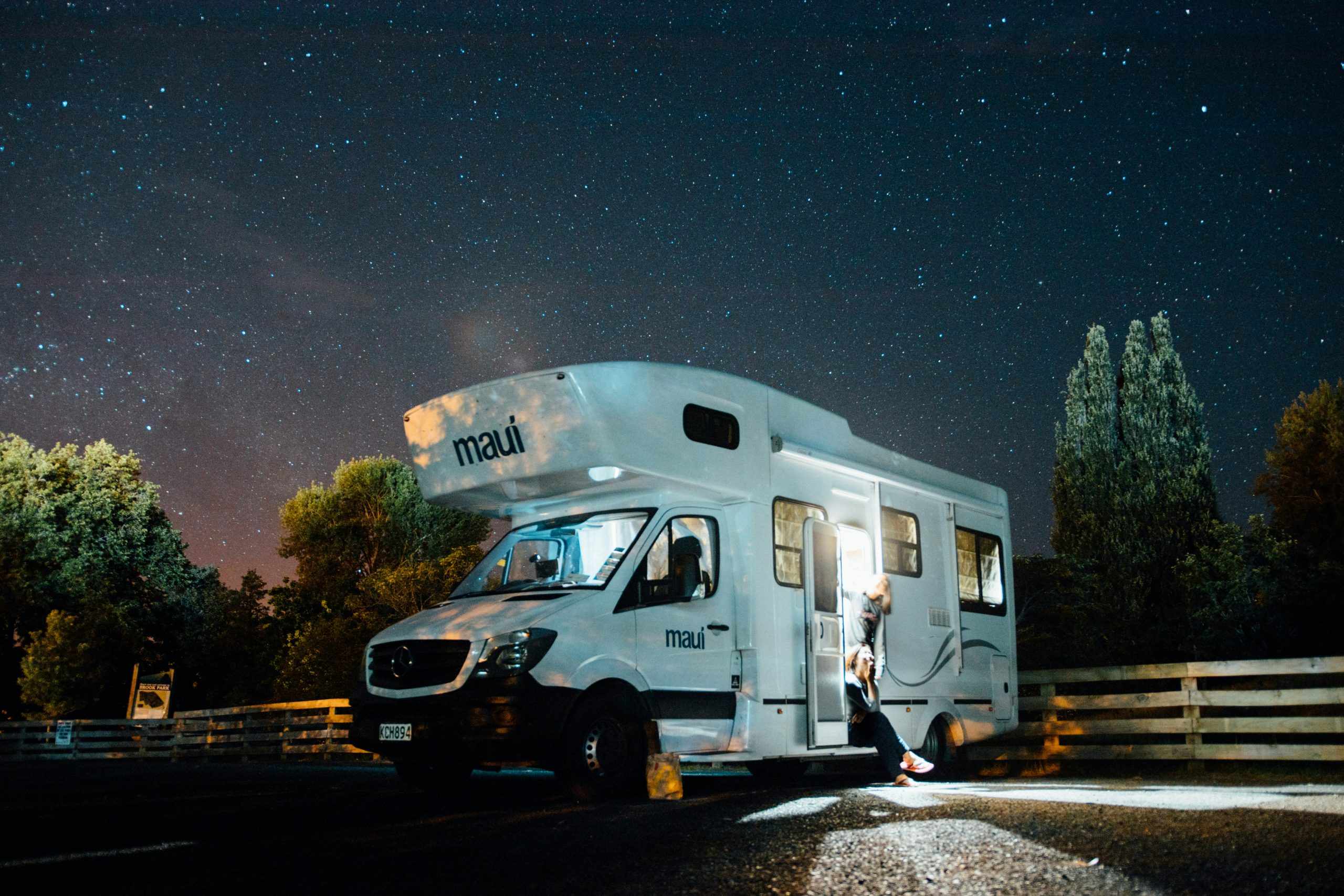Two things probably come to mind when you think about glaciers – remote Alaskan terrain and Global Climate Change. We read about them in history books, hear about them in Nat Geo documentaries, and see photographs depicting their imminent decline. But what if we told you that there are several, incredible glaciers that you can touch with your own two hands?
There’s no denying that glaciers are incredibly picturesque and their existence is almost implausible, but their presence is crucial to our environment. Glacial ice alters the ocean, fertilizes the soil, and, with the help of icebergs, holds over 68% of our freshwater.
Whether or not you choose to take a stance on global climate change, we recommend bumping ‘experience a glacier’ to the top of your bucket list before they disappear altogether. If you have been looking for an excuse to visit a glacier, you won’t have to travel very far – they can be found on just about every continent!

Athabasca Glacier
Alberta, Canada
One of North America’s most cherished and fascinating glaciers, Athabasca Glacier, sits just a stone’s throw from the aptly named Icefields Parkway in Jasper National Park. One of six ‘toes’ or ice sheets that shape the Columbia Icefield, Athabasca Glacier is undeniably humbling in both size and stature.
One of the most accessible glaciers in North America, reaching the foot of Athabasca Glacier is a remarkably easy feat. Just a short, steep footpath from the parking lot leads directly to the foot of this Canadian Rocky treasure. Sadly, the trek to reach Athabasca Glacier increases each year.
Signposts scattered along the trail to the base of the glacier serve as a sobering reminder that this natural wonder is receding at an astonishing rate. Over the last 125 years, Athabasca Glacier has lost more than half of its volume and continues to retreat roughly 16 feet every year.
Visiting Athabasca Glacier
Portions of Athabasca Glacier are visible from Icefields Parkway. However, for a better view, park in the marked parking lot and walk the 1-mile trail to the toe of the glacier. Be mindful of signposts and placed ropes – they indicate hidden crevasses scattered near the trail.
If you’re hoping to explore beyond the toe and get up close and personal with this ancient ice flow, you’ll need to book a guided tour. Experienced guides will keep you safe while you traverse the top of the glacier and fill your canteen with crystal clear glacier water.

Exit Glacier
Alaska, U.S.
Located in the heart of Kenai Fjords National Park, Alaska’s Exit Glacier is often considered the unsolicited poster-child of global climate change. Science and statistics aside, Exit Glacier is one of few accessible glaciers in Alaska, so it serves as a visual, tangible, first-hand illustration of what’s happening to icefields around the world.
Like Athabasca Glacier, the trail to the toe of Exit Glacier is decorated with signs that depict 195 years of glacial recession. The first sign, titled “1815,” sits at the visitor center, while the one marked “2010” sits over a mile up the trai. Today, visitors gaze in awe at the considerable gap between the final marker and the toe of Exit Glacier.
The disheartening reality is that these 500 square miles of ancient ice could disappear entirely within a few decades. We recommend standing face-to-face with Alaska’s most impressive glaciers before it’s too late.
Visiting Exit Glacier
Exit Glacier can be easily accessed via a 15-minute drive from Seward, Alaska at the end of Exit Glacier Road. Once you’ve arrived at the parking area, a short, flat trail will take you to the toe of the glacier. The Edge of the Glacier Trail offers great photo ops in front of glacial ice and is ideal for a quick, family-friendly trip. If you’re looking for more of an adventure, the Harding Icefield Trail climbs 3,500-feet over 4.2 miles and offers panoramic views of the 700-square-mile Harding Icefield.

Sperry Glacier and Grinnell Glacier
Montana, U.S.
With a name like Glacier National Park, it’s no surprise that this scenic slice of Montana touts a reputation for housing plenty of impressive glaciers. What most visitors to the park probably don’t realize is when the park became official in 1910 it housed over 100 glaciers. Today, it is home to less than 30.
According to experts, the park’s namesake glacial icons are in grave danger of disappearing in the next few decades. Two of the most popular glaciers in the park, Grinnell and Sperry, have reduced by as much as 50% since 1966.
If the rapidly changing landscape isn’t enough to prompt a visit, we’re confident the sheer natural beauty at the foot of both Grinnell and Sperry will change your mind. Experiencing these park gems means strolling through incredible alpine meadows, having lunch beside crystalline blue lakes, and taking in commanding views of world-renowned glaciers.
Visiting Sperry and Grinnell Glaciers
Accessing Grinnell Glacier requires a strenuous, 10.6-mile (round trip) hike. However, 3.4 miles can be covered using shuttle boats to cross Swiftcurrent Lake and Lake Josephine.
Sperry Glacier is one of the largest glaciers in the park, and the Sperry Glacier Trail will take you directly to the base of the glacier. You’ll begin your trek at the Lake McDonald Lodge. From there, you can either opt to tackle the 5,000 vertical feet and 8.7 miles in a single trip, or give your bones a break and spend the night at Sperry Chalet. From the Chalet, it’s just 2.5-miles to Sperry Glacier.
The best time to tackle either of these hikes is during summer months when there will be less snow at higher elevations.

Mendenhall Glacier
Alaska, U.S.
Just a short trip from Juneau lies southeast Alaska’s only road-accessible glacier, Mendenhall. More than 400,000 visitors travel to Mendenhall each year to kayak to the edge of the ice or explore several scenic trails to viewpoints overlooking this natural phenomenon.
Like the other glaciers on this list, Mendenhall’s recession is not only statistically alarming but is visibly apparent. A collection of images ranging from the 1950s to 2011 show the glacier retreating further and further from the shores of Mendenhall Lake. According to a recent study, if warming continues at this rate, within the next century, the terminus of the glacier will no longer be visible from the Visitors Center.
Alaska’s iconic glaciated landscape is truly one-of-a-kind, so if you’re looking for the ideal glacier-viewing experience, Mendenhall is a great place to start.
Visiting Mendenhall Glacier
When we mentioned this is a short trip from Juneau, we weren’t exaggerating. Mendenhall Glacier is just 12 miles from town. From downtown, travel along Mendenhall Loop Road until it meets the visitor center – this is where your adventure begins.
Popular trails include the .3-mile Photo Point Trail, the 3.5-mile East Glacier Loop Trail, and the 6.8-mile West Glacier Trail. Don’t forget to drop by the visitors center and learn about Mendenhall’s fascinating history and future!
Conclusion
A lot can be said, assumed, or debated about global climate change. Until you have experienced first-hand the sheer power, size, and beauty of these landscape-altering natural wonders, it’s hard to appreciate what is at risk of being lost.
Unfortunately, the recurring, overarching theme for glaciers is one of retreat. So, if you’re hoping to explore one of these iconic and accessible glaciers, you’ll want to act fast. Want to get there in style with everything you need? Well, you’re going to want to check out an RV to rent through Outdoorsy.








